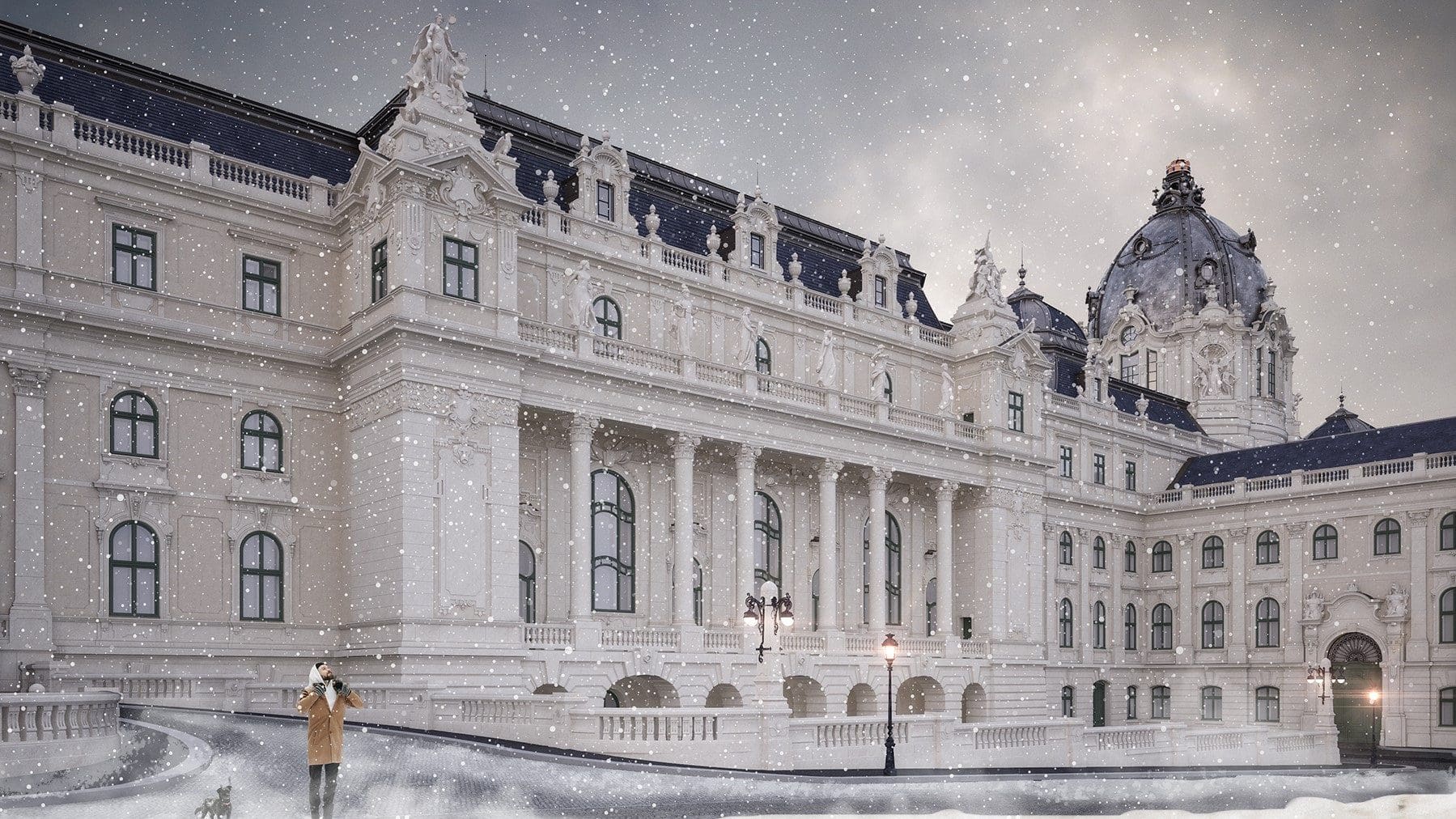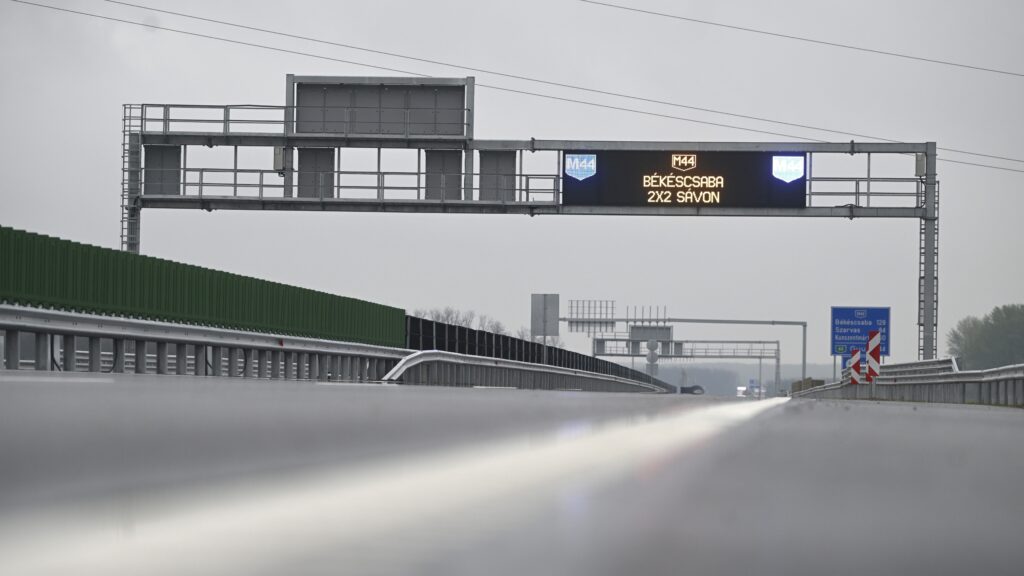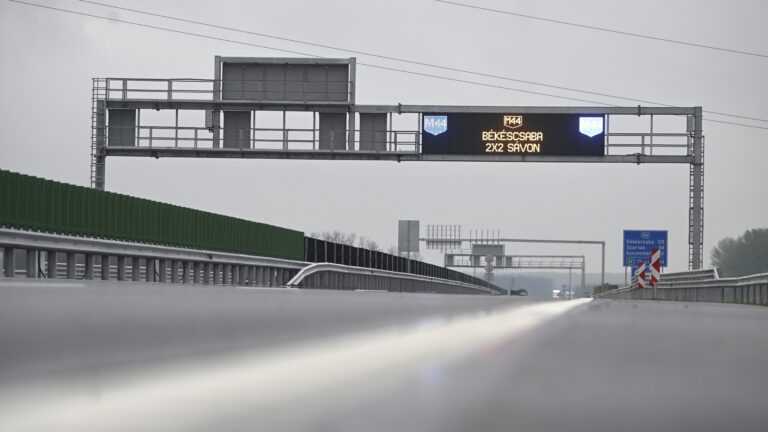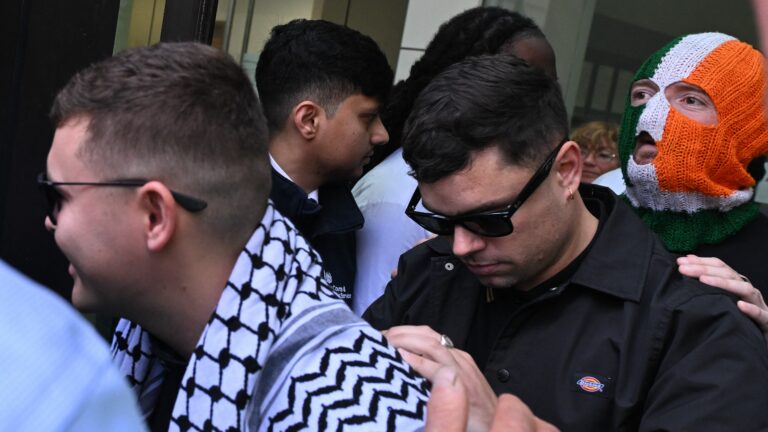A whole slew of public buildings, small and big, and the Royal Palace itself are the subject of reconstruction efforts in the historic Castle district of Budapest. In the Buda Castle, landscape issue unsolved since World War II have been recently settled, with historicist renovations that can be regarded as major even in international comparison taking place in the centre of Hungarian statehood—albeit amidst expert and political debates.
If there is such a thing as classic Budapest scenery, that is Castle Hill: with the silhouettes of the palaces and towers in the medieval town centre, it is pretty in daylight, in the dim of sunset, or illuminated in the night alike. It’s no surprise that the Buda Castle is included among UNESCO’s world heritage sites.
But the sight of the prestigious Castle District is dominated by cranes these days. Under the National Hauszmann Programme, named after one of the late architects of the Royal Palace, several buildings, deteriorated or torn down during the 20th century, are being built back. As a result, we will have the chance to get to know the Castle as never seen before by the contemporary generations, in its original form.
But where does the story of the Buda Castle take us back to?
First of all, to the 13th century, when, in the aftermath of the devastating Mongol invasion of 1241, the Kingdom of Hungary was barely in existence. King Béla IV ordered a castle to be built on the Western bank of the Danube, in the easily defendable, tall limestone mountains. He also ordered the new fort to be populated by mostly German settlers. Castrum Novi Montis Pestiensis—this was the official name of Buda in those medieval times, which soon became the political and cultural centre of the late medieval, early Renaissance Kingdom of Hungary, about to experience its rebloom. It was home to such rulers as King Sigismund, who was also Holy Roman Emperor, and King Matthias Corvinus.
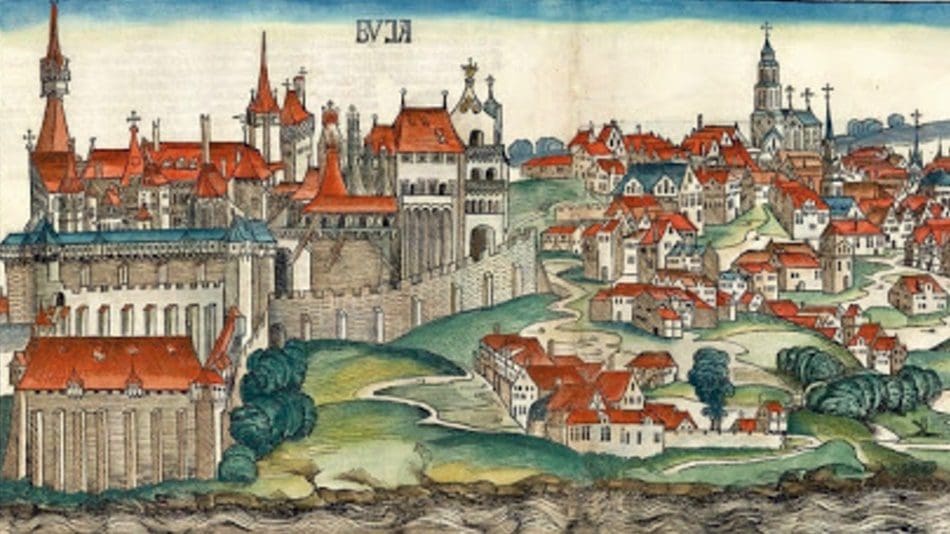
And, just as Béla IV had the Castle built by royal decree, first Sigismund, then Matthias expanded the Royal Palace by orders from the king. The palace became one of the largest and most beautiful fortified palaces in Europe, complete with Renaissance and Gothic elements and multiple towers—until it was completely destroyed when Christian forces recaptured Buda in 1686. Out of its ruins, by royal order from a Habsburg king this time, a new Royal Palace was born, then expanded again. Its most recent version was created after the devastation of World War II in 1944–1945.
In the 2000s, EU subsidies and additional revenues from the improving economy meant better financial circumstances for Hungary. After the available funding was supplemented by political will after 2010, a new wave of renovations started, which has been going on since.
The reason behind the comprehensive restoration work is that there was no will nor funds to restore the buildings severely damaged in WWII to their original forms in the period after 1945. That is a shame, since most of them were in a salvageable, rebuildable condition back then. Instead of restoring them, in the years and decades after 1945, some buildings—such as the Royal Palace itself—were left in ruins for a long time. Meanwhile, other structures, such as the Main Guardhouse and the Stable, were completely torn down instead of being renovated. Archduke Joseph’s Palace and the Defence Ministry Building on St George’s Square had the same fate.
These were no ordinary building demolition jobs. With the destruction of these buildings, St George’s Square itself, which was the symbolic centre of Hungarian statehood in the last century, was also destroyed. In its place, a wide, empty space was created. There, mediaeval ruins were unearthed first, then a partially reburied, partially exposed archaeological site—which was mostly closed to the public—was left on the location.
While it was never explicitly stated, these demolitions and the leaving of the area as an empty ruins site could also be considered a symbolic political act—the symbol of a victory over the political structure of pre-1945 Hungary, the doing away with the ‘Ancien Régime’.
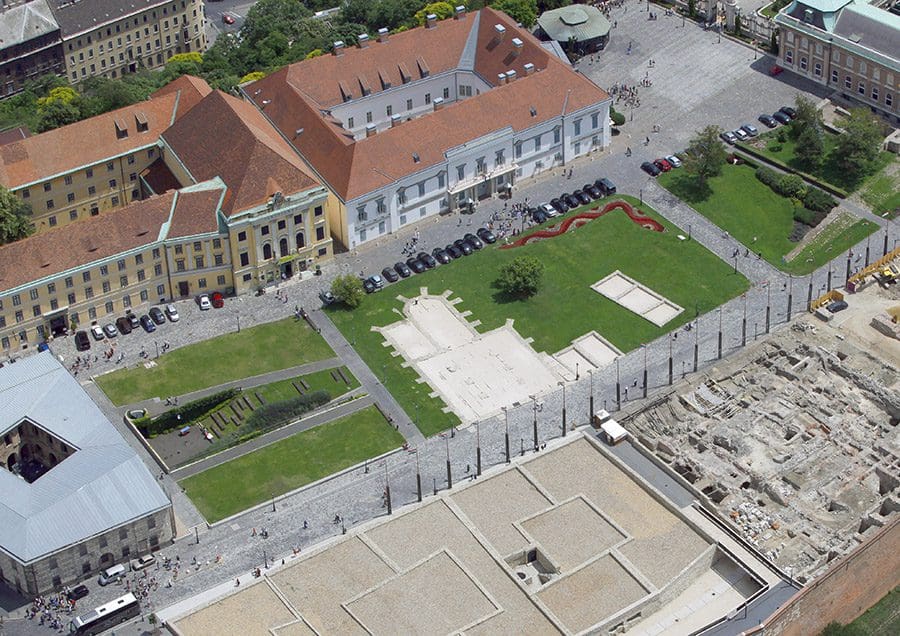
There were plans for the complete destruction of the damaged Royal Palace and for the creation of a new, modernist building block for high-ranking state officials in its place. However, even the strictest, most Stalinist Rákosi regime did not dare to follow through. Speculations on what to do with the empty, ruinous Royal Palace continued into the 1960s. Eventually, after long a long construction still ongoing well into the 1980s, modern museum interiors were built inside the remaining outer walls, where the Hungarian National Gallery is operating to this day.
The last few years, however, brought a lot of changes for the Buda Castle, and construction is still underway. It is important to understand that, when evaluating its reconstruction, the respective projects of each building should be judged separately—each of those could merit articles and debates of their own.
Next to Matthias Church of Gothic origin, which got a spectacular Neogothic façade in the 19th century, a Neogothic palace is being rebuilt, of similar height and ornamentation. This used to serve as the Finance Ministry building. After its renovation, the Ministry of Finance will be relocated there. Many find the structure to be overdecorated, or to be not a very well executed piece of architecture even for the Neogothic era, but the decision has been made: instead of the simplified façade it got after war, the building is being reborn in its fully original form.
The recently renovated old Buda City Hall is located across from Matthias Church. This is a simple, provincial Baroque building from the early 18th century, which has been refurbished with quality work and little posterior construction operations. Its modest scale and regained humble beauty are reminiscent of the real atmosphere of Buda in the 1700s.
Going south, in the direction of the old Royal Palace, a renovated old block is towering over the Castle’s habitational houses of medieval origin. This is the old building of the Hungarian Defence High Command. Only its lower floors were left standing after 1945, then a long debate ensued about what to do with them for over half a century. Eventually, the current administration decided that the original tall office building with a dome will be reconstructed. Next to that, on a plot unused for decades, the headquarters of the Red Cross will be built. This is a structure that used to be reminiscent of the past turn of the century, with no distinguishing architectural elements—and it will be that again.
This is where the block of the Carmelite Monastery of Buda starts as well. It has been serving, as it’s increasingly more the custom around the world, as the primary place of work for the Prime Minister and his staff for the past few years. The simple baroque monastery had been operating as a theatre for a long time. However, in the 2010s, while it badly needed renovation, a decision was made that the Prime Minister and his office would be relocated there, right next to the Presidential office of the Sándor Palace. With its new wooden window shutters, renovated façade, and interior design lacking any lavishness, the Carmelite Monastery is a beautifully executed reconstruction project in the Buda Castle.
Just as it happened with the Sándor Palace 20 years ago, the late baroque schloss had to be rebuilt from its ruins, too after the war. With meticulous work, the row of banquet halls was completely fixed up. Since 2002, it has been serving as the residence of Hungary’s Head of State.
And we are already at St George’s Square: across from the Sándor Palace, the renovation work on Archduke Joseph’s Palace is ongoing. This enormous, eclectic building was never considered to be among the most beautiful, most tactful structures even in its time, but its exterior is nevertheless being reconstructed to its original form. It was an unanswered question for a long time what the function of the rebuilt palace would be—eventually, it turned out that the headquarters of the Constitutional Court of Hungary, currently operating in a small street below the Buda Castle, will be located there. This, by the way, is a development that falls neatly in line with the overall philosophy of the reconstruction process.
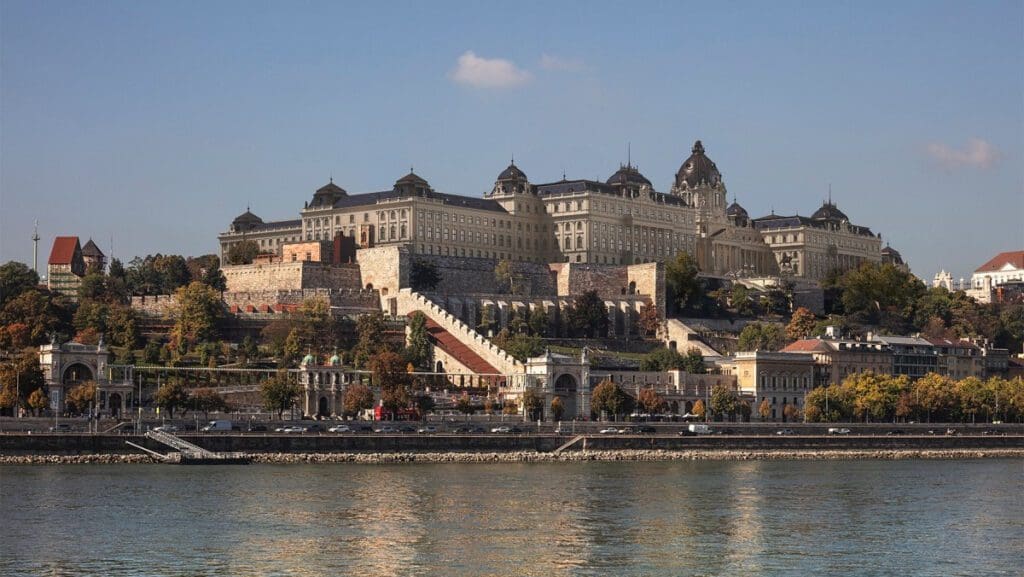
If we keep going from here, only one gigantic building is left: the Hungarian Royal Palace. The block, rivalling the world’s royal residences in size, is lengthily stretched out on top of the hill, parallel to the River Danube, thus giving an excellent view onto every part of the city. As of now, its walls are still containing modern interiors reimagined during the time of socialism, including the National Gallery and the National Széchényi Library, in another part of the block. What exactly should be done with the Royal Palace once the serious renovation efforts start, is still a subject of debate and scientific inquiry.
There is a concept taking shape according to which the most prominent banquet halls, including the throne hall, would be built back based on plans preserved from the late 19th century. In addition, the façade would retrieve its former, more detailed ornamentation. Under the same project, in lieu of the current, tall baroque dome design during the time of socialism, a new, smaller dome would be constructed that features both secessionist and baroque elements. With these developments, the overall appearance of the Palace would change entirely. It is certain that the reconstruction of the row of banquet halls would require a large amount of interior construction work and also a large amount of expenditure. If the large-scale renovation of the Royal Palace does get underway, that would be a decades-long effort, spanning well into the 21st century.
But who knows? By the 100th anniversary of World War II, the overall appearance of the Buda Castle may be very similar to what it used to be during peacetime before the war. However, many moons will pass by until then, and much political debate is to be had—what future awaits Hungary and Europe by then is also yet to be found out. What is certain is that the Buda Castle has lived through many changes over the course of centuries—and we can only hope that it is decades of peace and prosperity that it and Hungary can look forward to in the near future.

